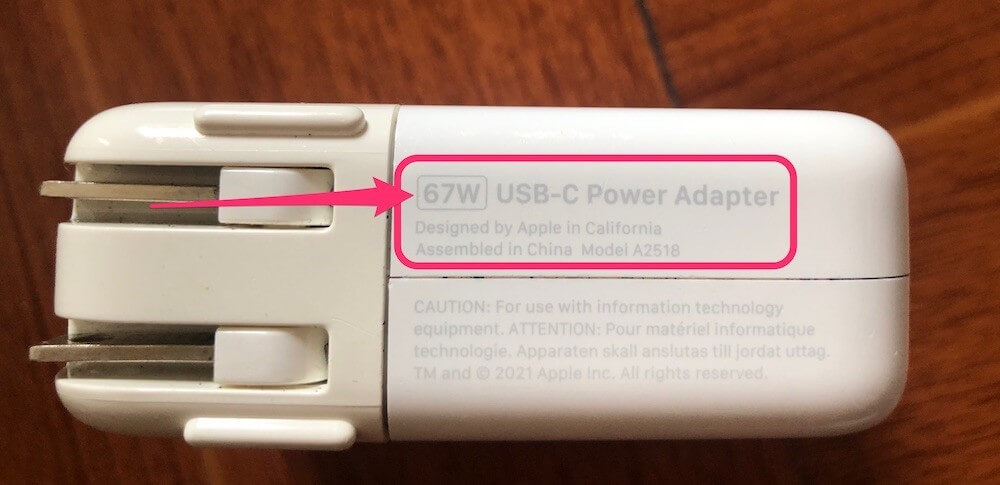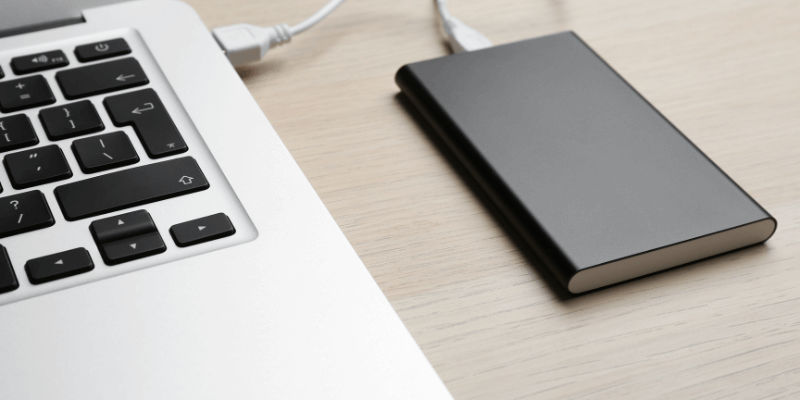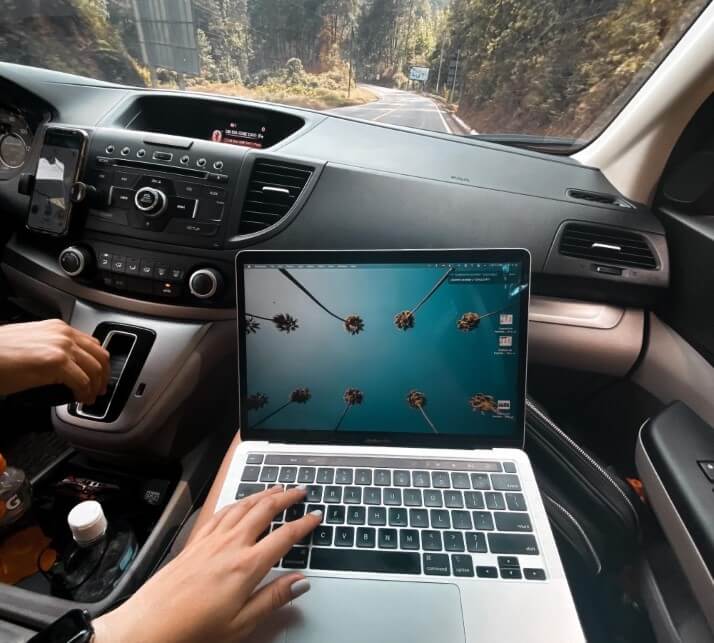We have all been there, stranded on vacation with a dead MacBook and a forgotten charger. Or maybe you got all the way to work, the doctor’s office, or another location and realized that your charger was somehow lost along the way. So, how do you charge a MacBook without a charger?
As a computer tech, I have been asked if this is possible several times. The bad news is that you need some kind of device to charge your MacBook. But the good news is that it does not necessarily need to be the charger that came with your device.
So, let’s look at a few different ways to charge a MacBook without a charger.
Table of Contents
Key Takeaways
- Whether you are missing your charger completely, missing your cord, or missing the access to a power source, there are still a handful of options you can turn to.
- Portable batteries or power banks are an option in a pinch, but you’ll need to remember to keep them charged up and ready to go.
- You can find power in remote locations, like when you’re on a camping trip, using a solar-powered charger. Just make sure you have plenty of sunlight.
- Using a USB-C charger is an option when you forget your MagSafe Charger.
- You can also plug your MacBook into your car, using either the 12-volt socket or a power inverter.
Different Methods to Charge a MacBook Without a Charger
While the most ideal option, Apple chargers can be very expensive, especially if this is a one-time situation. Not to worry! This article is here to help you determine a few other options in order to charge your computer when you do not have your Apple Charger or easily available power sources.
Keep in mind, many MacBooks require a different wattage in order to charge safely. Be sure to determine which wattage your MacBook requires and its limits prior to using any of these options.

Please note: that while these options may be safe to use one time, many of these should NOT be a permanent replacement for your Apple Certified Charger. By regularly using these methods, you might see long-term battery damage, battery swelling, slow battery charging speed, and even possibly USB-C port damage.
1. Portable Power Bank or Portable Super Battery
If you are anything like my family, you may forget a charger, but you will always have excessive amounts of portable power banks with you on your vacations, left in your purse, or in your backpack.
Now, it appears that “Super Batteries” are beginning to replace these portable power banks. Both of these, while they are mostly useful for phones, they can also be used for your MacBook. Power Banks and Super Batteries are extremely convenient and easy when you have no other ways to charge your devices, but you must remember to charge them!
A power bank or super battery with no charge will do you no good when you are trying to charge your MacBook. My suggestion is to make sure as soon as you have access to a wall charger, be sure to charge up and grab your portable device for the next time you need it.

Depending on the wattage of the power bank or super battery, you will likely see a slower charging speed than you are used to for your Mac, but they will work in the ultimate pinch. These can be used with your cord for MagSafe, or can also be used with a USB-C cord.
2. Portable Solar Charger
If you forget your charger while going on a camping trip, you may have a portable solar charger available for your devices.
A portable solar charger will allow you to get Solar power in locations in which you do not have regular access to wall power. These are very convenient on camping trips, if you plan to spend a day at the lake, or other remote and outside locations where you may be taking your Mac.
Disclosure: The above link is an affiliate link (if you purchase through our link, we earn an affiliate commission at no additional cost to you). As an Amazon Associate, we earn from qualifying purchases. See our disclaimer.
You can use this and your MagSafe or USB-C Apple Charging cord to charge your Mac. Be sure to check the wattage output of the charger and the maximum wattage input to your Mac to ensure you will not provide too much or too little charge for your Mac.
Even though we need our MacBook to be charged, we need to make sure we are not surpassing the maximum wattage and potentially damaging our Mac.
3. USB-C Phone Charger or USB to USB-C Converter
If it is the cord that you don’t have for your MacBook, a typical USB to USB-C phone cord will work to charge your computer.
We are not able to charge using typical USBs, so if you only have a USB-to-USB cable, you will need to get or use a USB to USB-C converter in order for your computer to charge.
Plugging into the USB-C on your Mac is a quick and easy way to get a charge if you left your MagSafe charger at home. It is also a cheaper option if you need this one-time charge rather than buying a completely new Apple Mac Charger.
Keep in mind, If you are also using a phone cord adapter to charge your phone, once again, be aware that you will likely experience slower charging than normal. Keep an eye on your Mac during this time to avoid potential overheating or damage.
4. Universal Power Adapter
If you are in a different country, It is possible that you are currently unable to charge your MacBook due to having a USA-specific type plug.
A universal power adapter will allow you to plug into the different-type of plug while still using your full MacBook charger or even (depending on the adapter), just your MacBook charging cable.
Some manufacturers also make universal power adapters that have several different types of plugs, a USB-C is likely one of them, so you also wouldn’t need to worry about your cord!
Once again, I am going to remind you to check the wattage of your MacBook to ensure that you are not overcharging or undercharging the computer. A wattage that is too high can damage your Mac. Conversely, a wattage that is too low might not charge it very fast, or at all.
5. Car Charging Socket
Your car’s 12-volt charging socket, or “cigarette lighter” socket, can provide enough power to charge your Mac. Similar to using a USB-C cord and phone wall charger, you will likely see a reduced amount of charging speed and power, but it will work in an emergency.
If your car cannot power your Mac directly via this port, you can add one simple ingredient: a power inverter.

6. Car Power Inverter
As a last resort, I prefer a power inverter for our car when I have to work on long car rides.
Depending on the power inverter you get, it will have a few normal USA power plugs and maybe even USB plugs for charging your devices. This connects to your car’s 12-volt port (aka the cigarette lighter) and provides power to other devices, including your Mac.
These can be great when you need to charge a laptop, phone, ipads, or other devices that a car charging socket just won’t quite cut it.
It is critical that you pick one that does not exceed the maximum wattage of any of the devices that you may use to plug into it. This is a great option to be able to charge while you are on the go.
Final Thoughts
This article provides you with several options (and tried and true methods) for charging your MacBook when you either do not have your charger, do not have your cord, or do not have easily accessible access to power.
We have all been there, and we also hate being stranded without our MacBooks! In order to ensure that we keep our MacBook battery as healthy as possible, we need to recognize that these methods cannot be regularly used. However, in those rare moments when you are truly stuck, we hope one of our ideas can help save you!
Have you used any of these methods? Did you learn a new method? Let us know in the comments!
